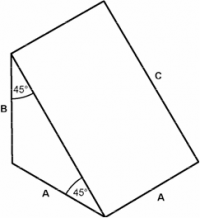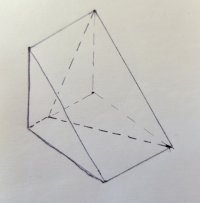eddy2017
Elite Member
- Joined
- Oct 27, 2017
- Messages
- 2,525
Hi, I will need something from you to start trying to figure this one out.
just a tip like you always do. Nothing is crossing my mind right now.
Which of the following best describes the faces for the following figure?

just a tip like you always do. Nothing is crossing my mind right now.
Which of the following best describes the faces for the following figure?
- 2 equilateral triangles, 1 square, 2 rectangles
- 2 equilateral triangles, 2 squares, 1 rectangle
- 2 isosceles triangles, 1 square, 2 rectangles
- 2 isosceles triangles, 2 squares, 1 rectangle


